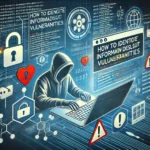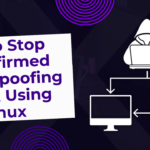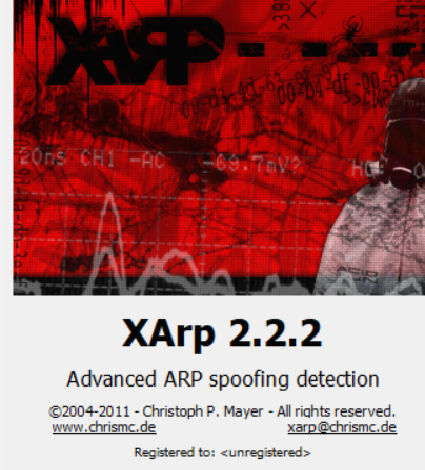
How to Stay Safe From Hackers: A Comprehensive Guide
In today’s digital age, where our personal and professional lives are increasingly intertwined with the online world, the threat of hackers looms large. Cybersecurity has become a crucial concern, as hackers constantly seek to exploit vulnerabilities and gain unauthorized access to sensitive information. This comprehensive guide will provide you with the necessary knowledge and strategies to stay safe from hackers and protect your online safety.
Throughout this article, we will delve into the intricacies of the hacker landscape, exploring the different types of hackers and their motivations. We will also cover a range of topics, including securing your online accounts, avoiding phishing scams and malware, protecting your home network, safeguarding your personal information, and implementing cybersecurity best practices. By the end, you’ll have a thorough understanding of how to mitigate the risks and keep yourself and your data safe from the ever-evolving tactics of cybercriminals.
Cybersecurity is no longer a luxury, but a necessity in today’s connected world. Join us as we explore the strategies and techniques that will empower you to stay one step ahead of the hackers and maintain your data protection and identity in the digital landscape.
Understanding the Threat of Hackers
In the ever-evolving digital landscape, understanding the threat of hackers is crucial for maintaining online safety and protecting your sensitive data. Hackers come in various forms, each with their own motivations and tactics, posing a significant risk to individuals and organizations alike.
Types of Hackers and Their Motivations
Hackers can range from curious individuals exploring vulnerabilities for personal interest to organized cybercriminals seeking financial gain or pursuing political agendas. Some hackers may be driven by a desire to challenge their own skills, while others may be motivated by more nefarious intentions, such as stealing personal information or disrupting critical infrastructure.
Common Hacking Techniques and Methods
Hackers often employ a range of techniques to infiltrate systems and gain unauthorized access. These include phishing scams, where they use deceptive emails or websites to trick users into revealing sensitive information, as well as malware attacks that can infect devices and networks. Additionally, hackers may exploit data breaches and leverage social engineering tactics to manipulate individuals and circumvent security measures.
By understanding the various types of hackers and their common methods, you can better identify and mitigate the threats to your online safety and data protection. This knowledge is crucial in developing effective strategies to safeguard your digital assets and minimize the risk of becoming a victim of cybercrime.
Securing Your Online Accounts
Protecting your online accounts is a crucial step in safeguarding your digital information from hackers. One of the most effective measures you can take is to create strong and unique passwords for each of your accounts. Avoid using easily guessable information like birthdays or pet names, and instead, opt for complex combinations of letters, numbers, and special characters. This will make it significantly more challenging for cybercriminals to gain unauthorized access to your sensitive data.
Creating Strong and Unique Passwords
When it comes to password security, quality is more important than quantity. Rather than relying on a single, easy-to-remember password across multiple accounts, take the time to generate unique and robust passwords for each of your online accounts. This will help prevent a single breach from compromising all of your personal information. Consider using a password manager to generate and store these strong, unique passwords, making it easier to maintain good password hygiene.
Using Two-Factor Authentication
In addition to creating secure passwords, enabling two-factor authentication (2FA) on your online accounts can provide an extra layer of protection against hackers. 2FA requires an additional step beyond just a password, such as a one-time code sent to your mobile device or biometric authentication like fingerprint or facial recognition. By implementing 2FA, you can significantly reduce the risk of unauthorized access to your accounts, even if your password is compromised.
By focusing on password security and leveraging two-factor authentication, you can make it much more challenging for hackers to gain access to your online accounts and the valuable data they contain. These best practices are essential for safeguarding your personal information and protecting yourself from the ever-evolving threats of cybercrime.

Staying Safe from Hackers
In today’s digital landscape, hackers are constantly devising new tactics to infiltrate our online accounts and systems. Two of the most prevalent threats are phishing scams and malware. Hackers often use social engineering techniques to trick users into revealing sensitive information or granting them access to their devices and networks.
Avoiding Phishing Scams and Malware
To stay safe from these threats, it’s crucial to be vigilant and learn how to identify and avoid phishing scams. These deceptive messages often appear to be from legitimate organizations, like banks or government agencies, but are designed to steal your personal data or login credentials. Carefully scrutinize the sender’s email address, look for grammatical errors, and never click on suspicious links or attachments.
Similarly, malware can infiltrate your devices through seemingly harmless downloads or infected websites. Be cautious when browsing the internet, and only download software from trusted sources. Investing in reliable antivirus and antimalware software can also help detect and remove any malicious programs that may slip through.
Keeping Software and Operating Systems Updated
Another crucial step in staying safe from hackers is to keep your software and operating systems up to date with the latest security patches. These updates often address known vulnerabilities that hackers may try to exploit. By staying proactive and regularly updating your devices, you can significantly reduce the risk of falling victim to these common hacking techniques.
By combining vigilance against phishing scams and malware with a commitment to keeping your systems up to date, you can effectively mitigate the risks posed by hackers and strengthen your overall cybersecurity posture.
Protecting Your Home Network
Your home network is a gateway to your personal devices and data, making it a prime target for hackers. Ensuring the security of your home network should be a top priority when it comes to maintaining your online safety and protecting your sensitive data.
Setting Up a Secure Wireless Network
Properly securing your wireless network is a crucial step in safeguarding your home environment. Start by using strong encryption protocols, such as WPA2 or WPA3, and setting a unique and complex password to prevent unauthorized access. Additionally, keep your router’s firmware up-to-date to address any known security vulnerabilities.
Using a Virtual Private Network (VPN)
Leveraging a virtual private network (VPN) can further enhance the security and privacy of your home network. A VPN creates an encrypted tunnel between your device and the internet, masking your online activities and protecting your data even when using public Wi-Fi networks. By incorporating a VPN into your home network setup, you can significantly reduce the risk of eavesdropping or unauthorized access to your sensitive information.

Safeguarding Your Personal Information
In today’s digital landscape, where personal information is a valuable commodity for hackers, it’s crucial to prioritize the protection of your identity and sensitive data. Your name, address, and financial details can be prime targets for cybercriminals, who may seek to exploit this information for their own nefarious purposes.
Protecting Your Identity Online
One of the first steps to safeguarding your personal information is to be cautious about sharing sensitive details on social media platforms. Limit the amount of personal information you reveal publicly, as this can make it easier for hackers to piece together your identity and gain unauthorized access to your accounts. Additionally, regularly monitor your credit reports for any suspicious activity, as this can be an early warning sign of identity theft.
Secure Online Shopping and Banking
When it comes to conducting online transactions, such as shopping or banking, it’s essential to ensure that you are using secure connections and avoiding public Wi-Fi networks, which can be vulnerable to eavesdropping and man-in-the-middle attacks. Consider using virtual credit card numbers or digital wallets to further protect your financial information and reduce the risk of fraud.
By taking these proactive steps to safeguard your personal information, you can significantly minimize the likelihood of becoming a victim of identity theft or financial fraud, and protect your data from the prying eyes of hackers.
Cybersecurity Best Practices
Implementing cybersecurity best practices is crucial for maintaining your online safety. This includes regularly backing up your data to protect against data loss or ransomware attacks, using reputable antivirus and antimalware software to detect and remove malicious programs, and being cautious when using public Wi-Fi networks, which can be vulnerable to eavesdropping and man-in-the-middle attacks.
Backing Up Data Regularly
Regular data backups are essential to safeguard your digital assets. Whether it’s important documents, family photos, or critical business information, regularly backing up your data can help you recover from unexpected events, such as hardware failures, cyber attacks, or natural disasters. Consider using a combination of cloud-based storage and physical backup solutions to ensure the safety and accessibility of your data.
Using Antivirus and Antimalware Software
Protecting your devices with reliable antivirus and antimalware software is a vital step in maintaining your online safety. These tools can detect and remove various types of malicious programs, including viruses, spyware, and ransomware, which can compromise your system and steal your sensitive information. Regularly updating your security software and running comprehensive scans can help you stay one step ahead of evolving cyber threats.
Being Cautious with Public Wi-Fi Networks
While convenient, public Wi-Fi networks can pose significant risks to your cybersecurity. These networks are often unsecured, making them vulnerable to eavesdropping and man-in-the-middle attacks. Avoid accessing sensitive information, such as online banking or personal emails, while connected to public Wi-Fi. Instead, consider using a Virtual Private Network (VPN) to encrypt your internet traffic and protect your data when using public networks.
Conclusion
In conclusion, staying safe from hackers requires a proactive and comprehensive approach to cybersecurity. By understanding the threat landscape, securing your online accounts, avoiding common scams and malware, protecting your home network, safeguarding your personal information, and implementing best practices, you can significantly reduce the risk of becoming a victim of cybercrime.
Remember, cybersecurity is an ongoing process, and staying vigilant and continuously updating your knowledge and security measures is essential in the ever-evolving digital landscape. Embrace these strategies to keep yourself and your data safe from the persistent threat of hackers and ensure your online safety and data protection.
By following the comprehensive guidance outlined in this article, you’ll be better equipped to navigate the digital world with confidence, safeguarding your personal and sensitive information from the prying eyes of cybercriminals. Stay vigilant, stay secure, and enjoy the benefits of a safer online experience.














